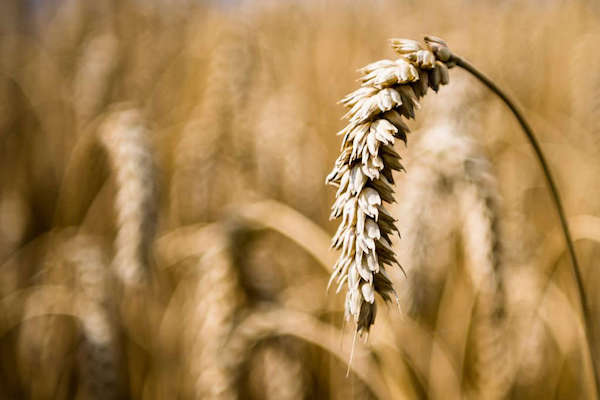Much like growing regions in the Northern U.S., Canada’s wheat crops are in rough, rough shape. Our neighbors to the north are in the midst of the worst drought in two decades. This summer’s drought follows multiple consecutive years of below-normal precipitation in many parts of Canada’s key farming regions. Combined with this year’s intense heatwaves, strong winds, and lower-than-average precipitation, the 2021/22 wheat crop in vast areas of the Canadian prairies faces severe negative impacts.
The USDA Foreign Agricultural Service’s Post in Ottawa, Canada, says dry conditions this spring in Saskatchewan, Canada’s top spring wheat province, prompted farmers to plant early but heat and wind through June and July has left much of the province facing moderate to extreme drought conditions. Southwestern Saskatchewan wheat was also hit by frost the week of June 21. As of July 12, spring wheat in the province was rated just 25% “good-or-excellent,” having lost -33 points in the two weeks prior (Canada releases crop conditions bi-weekly). Thirty-seven percent of Saskatchewan’s spring wheat crop is rated as poor to very poor. Meanwhile, the province’s durum wheat conditions also deteriorated -33 points with just 12% of the crop rated “good” as of July 12.
In Alberta, the number 2 spring wheat production province, 39% of the crop is rated “good-or-excellent,” down from 71% just two weeks prior. Alberta’s durum wheat crop is rated 33% “good-or-excellent”, a drop of -15 points from the previous two-week reporting period.
Saskatchewan and Alberta combined account for nearly 80% of Canada’s annual spring wheat production. Much of that wheat is typically slated for the export market, with China the biggest customer. In fact, demand from China so far this marketing year is more than double the three-year-average and expected to remain high throughout this marketing year and beyond, according to FAS Ottawa. Canada’s wheat exports were record high in the August through April period. Prices have risen sharply since, however, with Canada’s f.o.b. prices higher than competitors for most of the second half of the marketing year.
FAS says Canada’s wheat import levels in 2021/22 could resemble 2019/20 when poor harvest weather in Eastern Montana and Western North Dakota resulted in lower quality and an abundance of hard red spring and durum feed wheat. In MY 2019/20, downgraded wheat coupled with improved market opportunities for feed wheat drove increased exports to Canada.
Wheat market insiders note that the world does not face a wheat shortage as global supplies are more than sufficient overall. The problem is more the quality of wheat that will be available, with major production issues not only in Canada and the U.S., but also the EU, Russia, Kazakhstan, and even China. Recent flooding in China’s Henan province, the top wheat production region, as well as previous flooding in other key wheat areas has severely impacted quality and could drive up China’s wheat imports by as much as +40% this year, according to Bric Agriculture Group, a Beijing-based consulting firm.
Henan is also the country’s second-largest hog producer, according to Bloomberg. So far, big producers appear to have been spared any major hits due to the flooding but there are concerns that the flood waters could increase the spread of disease, including African swine fever. China’s hog herd is only recently thought to be back near 2018 pre-ASF levels, though it continues to battle new outbreaks of the disease, including new variants that are harder to detect. Meaning China’s hog herd rebuilding and subsequent massive feed demand may not be over just yet.
It’s also worth keeping in mind that chances of La-Nina in the latter part of the year could continue to roil global weather patterns. The latest forecast by the U.S. Climate Prediction Center said La Nina will potentially emerge during September-November and last through the 2021-22 winter, with a 66% chance during November-January. The La Nina phenomenon, the periodic but natural cooling of the equatorial Pacific, is typically associated with above-normal rainfall in Southeast Asia, South Africa, India, and Australia, and drier weather in Argentina, Europe, Brazil, and the southern U.S. FAS Canada’s latest Grain and Feed Update is HERE. (Sources: USDA, SaskWheat, Bloomberg)











